The Most Profitable Seats on the Plane: Not What You Think

There’s a common misconception that airlines make the most profit from Business and First Class seats.
Indeed, that used to be the case – and those are still the most expensive seats on the plane. But these are no longer the seats that generate the highest profit margins for many airlines… relative to the amount of space that they take up, anyway.
Premium Economy has become a huge profit generator for airlines
Since Taiwanese carrier EVA Air first introduced Premium Economy in the 1990s, many other airlines have followed. This product, a middle-ground between traditional Economy and Business Class, has proven to be a huge win-win for both airlines and their customers.
For passengers, Premium Economy offers more comfort than Economy at a lower price than Business or First Class. Not everyone wants to pay for a lie-flat bed and all the extra bells & whistles that come with Business Class. But there is a market segment that is willing to pay more to avoid having to sit in a tight seat with very little personal space for hours on end.
With airlines reducing their Economy Class inclusions and making Economy seats even narrower, Premium Economy has become an even more attractive option.
For airlines, Premium Economy has also become a great monetisation opportunity because it’s a very efficient use of the limited space available on board the plane.
The highest revenue per square-metre
An average Premium Economy seat takes up roughly 40-50% more space than an Economy seat. Yet, airlines often charge double or even triple the price of Economy for it. That’s a pretty great return on the investment of installing a few rows of Premium Economy!
Most airlines do also spend a bit more on meals and amenities for Premium Economy passengers… but we’re not talking hundreds of extra dollars per passenger. As a result, Premium Economy seats generally have the highest profit margin of any seats on the plane.
Overall, airlines still make the most money from Business and First Class seats. But they also take up much more space than a Premium Economy seat.
A quick look at the maths
To give you an example, in the same amount of space on a typical Boeing 787-8, you could put the following seats between the first and second sets of doors:
- 9 First Class seats in a 1-1-1 layout
- 20 Business Class seats in a 1-2-1 layout or 24 seats in a 2-2-2 layout
- 44 Premium Economy seats in a 2-3-2 layout
- 63 Economy seats in a 3-3-3 layout
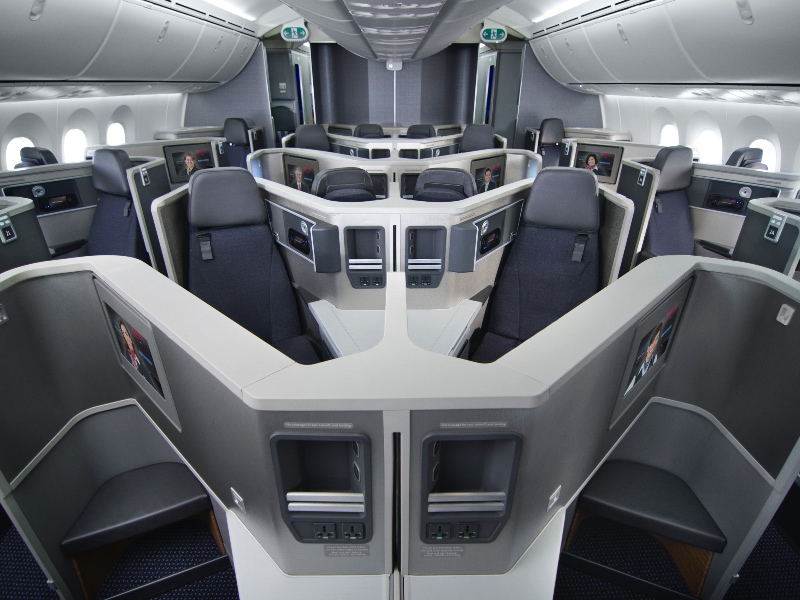
At the same time, consider how much airlines charge for each of these products. As an example, these are Qantas’ typical off-peak round-trip airfares from Sydney to Singapore:
- Economy: $950
- Premium Economy: $3,100
- Business: $4,300
- First: $7,700
In this example, Premium Economy takes up roughly 43% more space than Economy. But it commands an airfare that’s 326% higher.
At the same time, the Business Class airfare is only around 39% higher than the Premium Economy price. But the lie-flat Business seat takes up more than double the space of one Premium Economy seat!
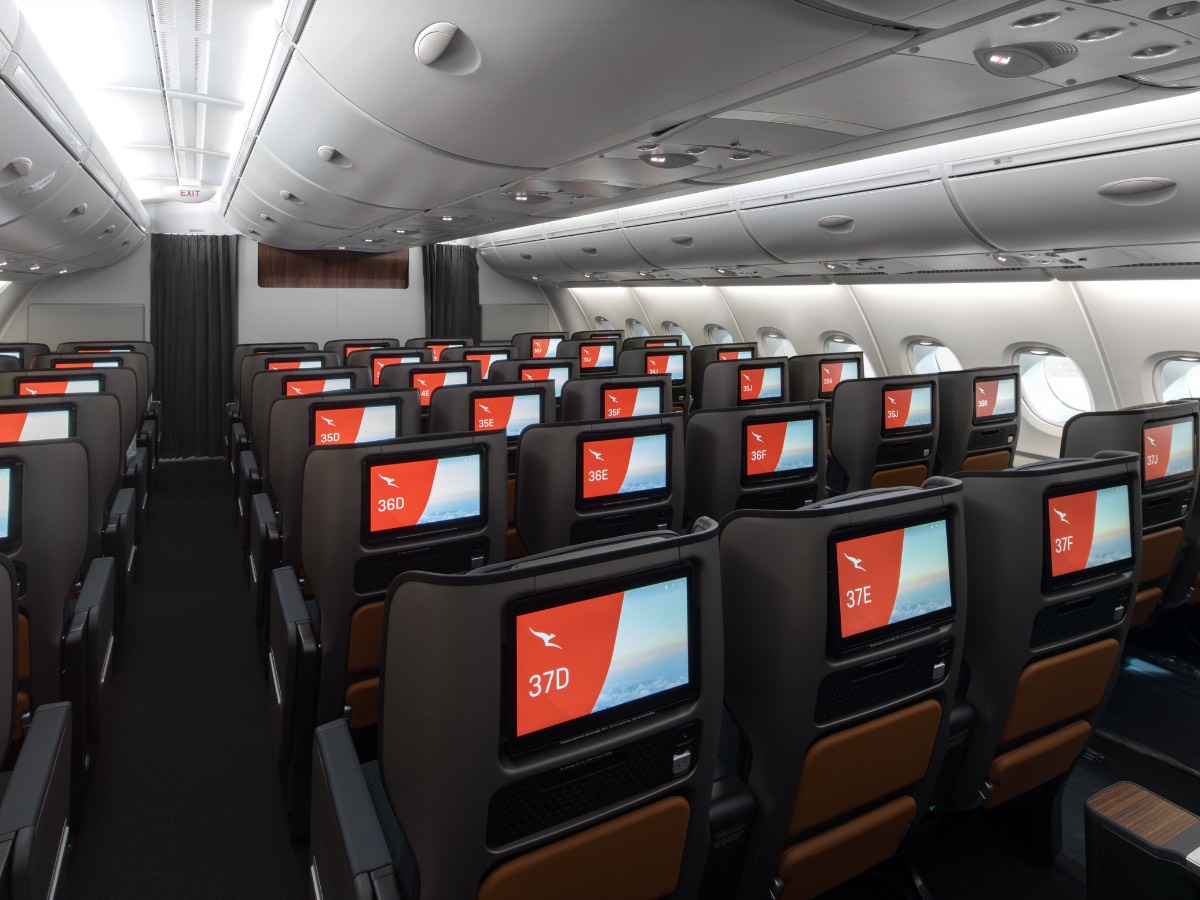
Lufthansa Group CEO Carsten Spohr has been saying for years that Premium Economy is the company’s most profitable cabin. This still remains the case today – not just at Lufthansa, but now at many other airlines too.
A bigger Premium Economy cabin can increase an aircraft’s range
For airlines, the economic benefits of installing larger Premium Economy cabins go beyond just the revenue potential.
When operating ultra long-haul routes that are close to the range limit of an aircraft, the plane’s weight is very important. On some of the more marginal routes, airlines may even need to restrict the number of passengers on board.
By having more Premium Economy and less Economy seats, airlines can make at least the same or even higher revenue, but with fewer passengers on board. This is why Singapore Airlines only has Business Class and Premium Economy on its ultra long-haul Airbus A350 flights from Singapore to New York. The flight is so long that the airline wouldn’t be able to operate it with a full Economy load anyway.

Air New Zealand is currently refurbishing its long-haul Boeing 787s with significantly larger Premium Economy cabins. By doing this, it’s removing a large chunk of Economy seats. But the airline was having to leave some of those Economy seats empty anyway on its longest flights, like from New York to Auckland.
Even on other routes, demand for Premium Economy has grown so much that it still makes good business sense to grow this cabin.
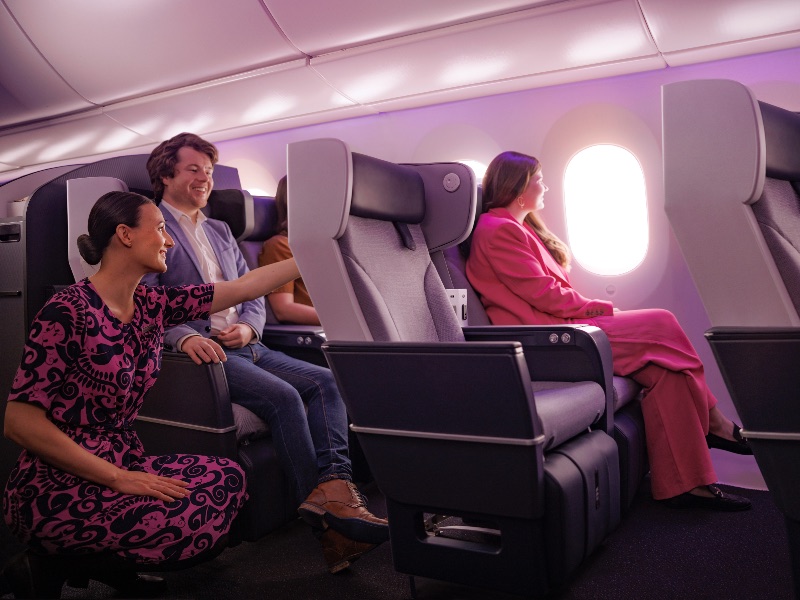
Qantas also benefits from having a fairly low-density configuration on its Boeing 787-9s operating on the Auckland-New York route, as well as Perth-London. Since the plane weighs less, it can fly further and is less likely to need to divert.
The differences between Premium Economy products
Given the huge potential revenue premium that airlines can attract for Premium Economy, it often surprises me when airlines choose not to bother providing more premium cabin service on board.
When buying a ticket, customers don’t just consider the seat. They consider the full ground and on-board experience, including the on-board catering, amenities provided and even things like the baggage allowance.
The on-board experience in Premium Economy differs greatly between airlines. Some airlines treat it as “Economy Plus”, where you get a bigger seat but the same food and drinks as Economy. Other airlines treat it more like “Business Lite”, with premium catering, more drinks, bedding and amenity kits all provided.
The latter group of airlines, which include Qantas, Air New Zealand and Emirates, can command a much higher price premium for their Premium Economy seats without using up any extra space on board.

Yet, airlines like Lufthansa and Iberia feed their Premium Economy passengers the same food and drinks as in Economy – just with nicer plates and metal cutlery. Finnair even charges extra for snacks or sparkling wine in its Premium Economy. This makes their offerings less competitive.
Singapore Airlines realised this last year, and invested in significantly elevating its Premium Economy on-board experience. It didn’t need to make any changes to the actual seats to do so.
I can understand that some airlines might be worried about cannibalising their Business Class demand by making Premium Economy too good.
Personally, I think this is a bit short-sighted because Premium Economy will never truly compete with a fully lie-flat Business Class product. There will still be people willing to pay for the much higher chance of getting a good sleep that comes with a flat bed. In reality, most passengers buying Premium Economy are “buying up” from Economy, rather than the other way around.
Then again, maybe the approach of giving Economy meals in Premium Economy is more about trying to save money, rather than for strategic reasons.
Some airlines have been slow to adopt Premium Economy
For years, Emirates resisted installing Premium Economy cabins on its planes for fear of cannibalising Business Class. The Middle Eastern airline finally relented a few years ago, and the product has been an enormous success. Emirates now realises that it’s a new – and even more profitable – market segment.
Emirates still enjoys strong Business and First Class demand, but the demand for Premium Economy has been through the roof. It’s been so popular, in fact, that Emirates still hasn’t made the product available for upgrades or frequent flyer redemptions.
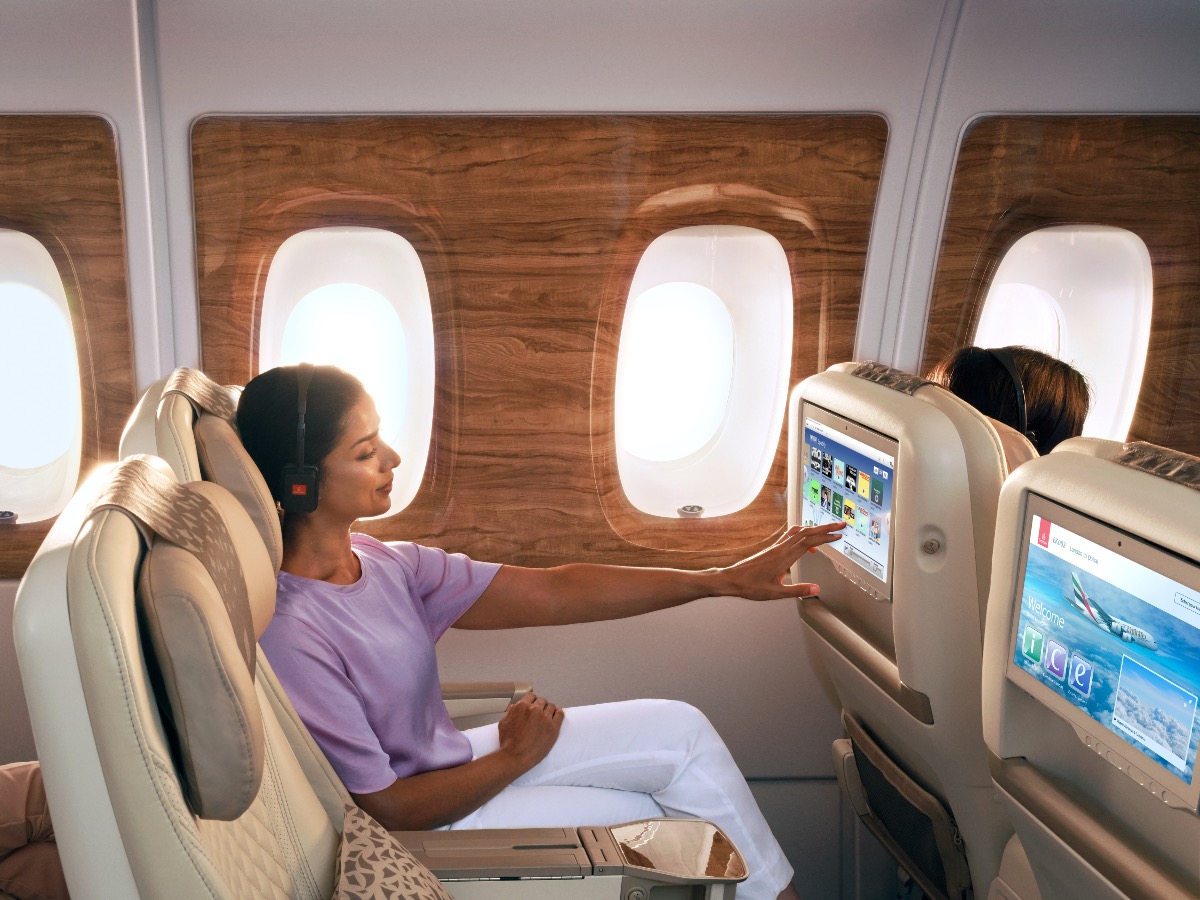
Around the world, many other airlines nowadays are removing their First Class cabins and replacing them with Premium Economy. Korean Air is the latest airline to start doing this. They’re doing this because it’s where the money is!
Italy’s ITA Airways has even chosen to install Premium Economy on its Airbus A321neo LR jets which fly to destinations in the Middle East and Africa. It’s one of the only airlines to offer three distinct cabins on a narrow-body jet, and it’s telling that one of those is Premium Economy.
Yet, some airlines still don’t have Premium Economy on their long-haul aircraft at all. Qatar Airways and Etihad are two big examples of this.
Why doesn’t Qatar Airways have Premium Economy?
Qatar Airways’ former CEO Akbar Al Baker publicly stated that he would never install Premium Economy on Qatar Airways planes because its Economy Class product was better than Premium Economy on other airlines anyway.
This is simply wrong.
Sure, Qatar Airways gives its Economy Class passengers better food, drinks and amenities than a small handful of airlines do in Premium Economy. But there’s no way you could argue with a straight face that Qatar Airways has a more comfortable Economy Class seat than you’d find in Premium Economy on most airlines. A Premium Economy seat has around 8 inches more legroom, is wider and also reclines further.

In my opinion, Qatar Airways would probably do quite well from selling Premium Economy.
Why doesn’t Qantas have Premium Economy on its A330s?
On a similar note, it’s somewhat surprising that Qantas has not installed Premium Economy on at least some of its Airbus A330s. Particularly the A330-300s which primarily fly between Australia and Asia.
There is almost certainly demand for Premium Economy on Qantas’ medium and long-haul flights, and Qantas isn’t monetising it on the many routes it serves with A330s. This even includes the Brisbane-Los Angeles route!

I can only think of two logical explanations for Qantas not installing Premium Economy on its Airbus A330s. The first is that the airline also uses these planes on shorter domestic flights where it thinks there isn’t demand for Premium Economy, and perhaps wants to keep commonality across its A330 fleet. But if that was the case, why not install Premium Economy just on the A330-300s which mainly fly international routes?
The second possible explanation is that many of Qantas’ A330s are approaching retirement age. Perhaps Qantas feels it’s not worth investing in new seats and taking aircraft out of service to install them, if they will be retired in a few years anyway. But some of Qantas’ A330s do clearly have a bit of life left in them, as Qantas will soon begin refurbishing them with new cabin fittings and Economy seats.
Many airlines don’t monetise Premium Economy as well as they could
Given how profitable it can be, it’s also surprising to see how hard some airlines make it to actually buy a Premium Economy ticket.
Most airlines don’t have Premium Economy seating on all routes or aircraft, so booking Premium Economy often means buying a mixed-cabin itinerary (with some legs in Economy). The pricing for this kind of ticket can be all over the place, and some airline websites make it really hard to book.
Virgin Australia won’t even sell you a Premium Economy ticket as a codeshare on any of its partner airlines that have it, including Singapore Airlines, United and Air Canada. This isn’t an isolated example.
It can also be quite hard to redeem frequent flyer points for Premium Economy seats, especially on partner airlines. For example, most Star Alliance airlines do not allow their members to redeem points for Premium Economy on any other airline in the alliance.
Qantas does at least allow Premium Economy redemptions on several partner airlines, but not all. Meanwhile, you can redeem Velocity points for Premium Economy seats on Singapore Airlines and Virgin Atlantic – but not United, Air Canada or ANA.
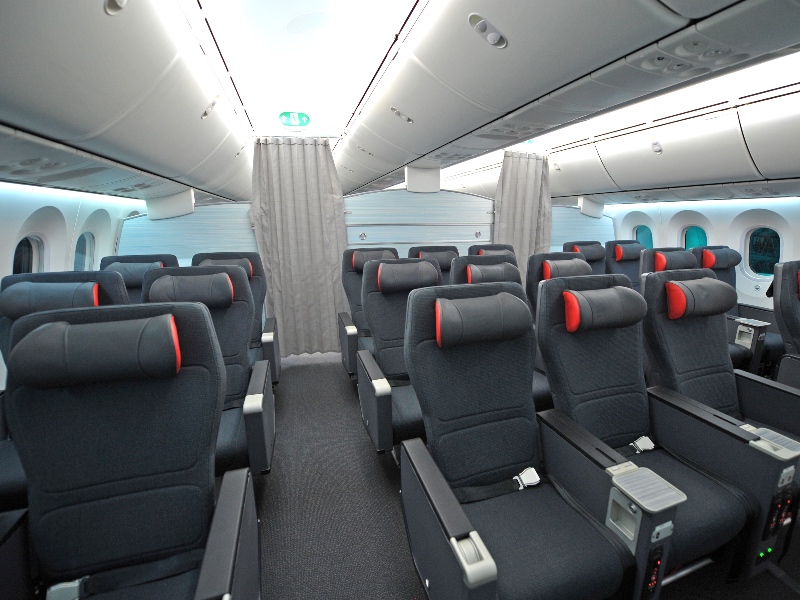
The upshot is that there’s still a lot more potential for airlines to monetise their Premium Economy cabins even further. Money talks, so perhaps this will finally start happening soon.
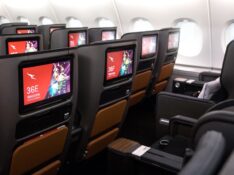
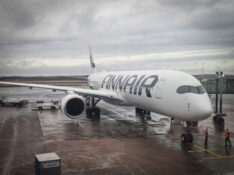

Community Comments
Loading new replies...
Join the full discussion at the Australian Frequent Flyer →